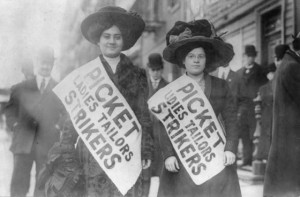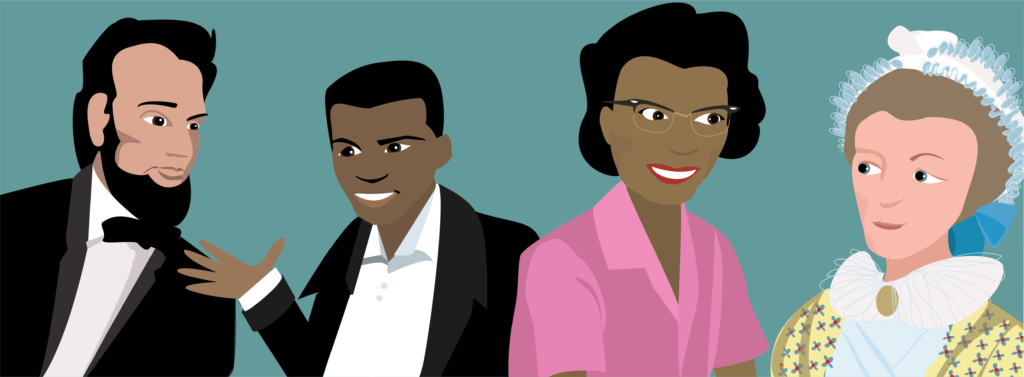Social studies, civil rights and the bigger picture
 There have been three presidential administrations, including the Obama Administration, since I last participated in a social studies methods class. Over the years, I’ve focused on units and lessons that support those broad themes of social studies without much deliberate thought given to those stemming concepts. Like all fundamentals that become second nature, though, it’s important to reflect from time to time on the essential themes of the discipline.
There have been three presidential administrations, including the Obama Administration, since I last participated in a social studies methods class. Over the years, I’ve focused on units and lessons that support those broad themes of social studies without much deliberate thought given to those stemming concepts. Like all fundamentals that become second nature, though, it’s important to reflect from time to time on the essential themes of the discipline.
Over the past year I’ve enjoyed returning to the familiar and striking out into new subjects of American history. In what shouldn’t be too surprising, those old themes I first heard articulated in my undergrad methods courses resonated among various subjects on which I wrote posts or researched for future posts. Three topics specifically stand out in my mind as relating simple truths tied to the notion of history as prologue.
I have a near life-long connection and interest in the Underground Railroad (UGRR), a subject with direct, often overlapping ties to both the labor and suffrage movements. Of these three subjects:
- Each involves a minority population seeking social justice.
- All face opposition from powerful social institutions accepted if not favored by a majority consisting of broad, diverse segments of society.
- In all three topics, alliances, some quite natural, others politically expedient, were formed.
In the final analysis, though, each principle minority group eventually faced the inevitable reality that only those most oppressed members could or would advance their cause. When allies’ stakes in the status quo came into conflict with furthering the ends of another group’s quest for social justice, those most vulnerable, those with the least social power were left on their own.
Helping those poor slaves
Despite generations of American History students being taught otherwise, the truthful story of the Underground Railroad is one of slaves freeing themselves. This in no way diminishes the bravery, both moral and physical, shown by whites who often took great risks to assist those seeking freedom from bondage. However, even abolitionists were constrained by their own interests and place in society.
Most who opposed slavery didn’t participate in the illegal, and more importantly, societally proscribed act of harboring fugitive slaves. This was especially true during the period between Nat Turner’s Revolt and the implementation of the Fugitive Slave Law of 1850. As the nature of the Underground Railroad changed during this time, the dominant role played by free blacks increased, but even that population had a restrictive stake in free society, however slight. For those not enslaved, the sense of urgency for abolition was always tempered by the perceived costs, real or simply feared, upon those who did not suffer directly from the institution of slavery. This same issue of urgency – and priority – came into conflict between African-Americans, now technically free, and another also technically-free minority.
Suffragettes and abolitionists
Beyond the scope of this post are other social factors making possible the rise of radical abolitionists and the doctrine set forth at Senecca Falls, New York a decade or more later. What is relevant is the alliance quickly formed between the pioneering women’s rights leaders and the nation’s best known abolitionists.
This supportive collaboration mutually celebrated the victory of abolition over slavery, but quickly, and in the most regrettable fashion, ended badly when the 15th Amendment was proposed.
By restricting the voting franchise to only males, women’s rights advocates, particularly the leaders Elizabeth Cady Stanton and Susan B. Anthony, were incensed. While some in the women’s movement reasoned that female former slaves had suffered equally with their male counterparts in bondage, others publicly uttered the ugliest of resentments.
Stanton, in the presence of long-time women’s right supporter Frederick Douglass denounced the 15th Amendment not only for excluding women, but by adding the racist logic that African-Americans were not yet ready to vote, unmistakably implying that white women were.
From that conflict came two great schisms that lasted for decades, arguably delaying the necessary momentum for what would ultimately become the right of women to vote.
The first and most immediate split formed between women and men. Stanton and Anthony felt that the cause of women’s rights must be carried alone on the shoulders of those directly denied the rights enjoyed by the opposite sex. Again, this these of power and the difficulty maintaining alliances between those with unequal positions of power is illustrated.
Nearly identical to the bitter divisions among abolitionists in the 1830s and 40s, was the falling out among women who held opposing views on the timing of women’s rights. Stanton and Anthony led one contingent fighting for the immediate right of suffrage, while powerful women supporting an incremental pace led another. While this separation was eventually healed to the point of renewed collaboration among women and broader groups including men, the final decade of the suffragette’s push for the vote overlapped with the ascending labor movement. It was a tenuous relationship.
Women and the labor movement
My recent posts regarding the Triangle Fire exposed me not only to the critical role played by immigrant women in the labor movement, but the lopsided relationships among suffragettes, conservative and largely foreign born labor activists.
For several decades, particularly during the first decade of the 20th century, suffragettes and labor rights activists stood shoulder to shoulder when seeking to advance their related aims. Both shared, at first, common traits among members. Labor organizations such as the AFL were comprised of white, protestant, skilled workers; suffragettes tended to also be white, protestant, middle-class or better. However, when Eastern and Southern European immigrants, predominantly Catholic and Jewish, began arriving in large numbers to meet the demands for unskilled labor in America’s industrial boom around the turn of the century, the dynamic of the labor movement began to change. So did the once strong ties between labor and women’s rights.
Common among the battles for abolition of slavery, the right of women to vote, and now for humane working conditions for unskilled as well as skilled laborers, the question of urgency divided allies for some historically familiar reasons.
Immigrant workers, particularly those Jewish workers from Russia and the Baltic states for whom incrementally-gained rights were equated with accepting pogroms as a price for plodding tactics, had no intention of waiting upon Samuel Gompers to get around to fighting for unskilled worker’s rights. When Clara Lemlich called for the general strike of 1909, the Uprising of the 20,000, the conservative, wealthy leaders of the suffragette movement quickly disavowed any ties to the radicals unwilling to wait for basic human rights in the workplace. For the immigrant women employed in hundreds of sweatshops in New York alone, the message, if not already understood, was underscored by virtual abandonment by practically all who did not toil in the garment and textile factories.
Even the improvements brought about by the tragedy of the Triangle Fire reflect an incremental pace of reform that remains fragile even today.
Power, agitation and civil rights
Reflecting on these recurring themes of social studies, power, authority, groups and institutions, there is a glaring omission in the narrative that is the study of American History. No minority group has ever been successful in achieving even the most basic of human rights without engaging in widespread, public agitation.
In only the past quarter-century, movements such as Act Up, Occupy Wall Street, and the National Council of La Raza have all experienced success in gaining rights, but not without dark periods experienced by those minority groups discussed in this post. All received temporary boosts in influence due to co-opting with or by other organizations. All three movements fought practically alone when public prejudices seemed too cumbersome for allies to stand fast. So goes the replaying of past themes across the years.
In the final analysis of progress in those matters of social justice, recognized and realized only after long and resolute struggles, just causes triumph only when the most affected minority group is willing to no longer tolerate incremental justice, to be delayed by political expediency or to deny the need for public agitation.
